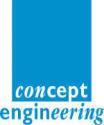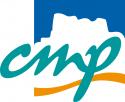UB10 Session 10
Date: Thursday 30 March 2017
Time: 12:00 - 14:30
Location / Room: Booth 1, Exhibition Area
| Label | Presentation Title Authors |
|---|---|
| UB10.1 | A FRAMEWORK FOR VARIATION-AWARE ANALOG CIRCUITS SIZING Presenter: Ons Lahiouel, Concordia University, CA Authors: Mohamed H. Zaki and Sofiene Tahar, Concordia University, CA Abstract Today's analog design faces significant challenges due to circuit complexity and short time-to market windows. The proposed demonstration presents new techniques for enhancing variation-aware circuits sizing. The sizing problem is encoded using nonlinear constraints. A new algorithm using Satisfiability Modulo Theory (SMT) solving techniques exhaustively explores the design space and computes a continuous set of feasible sizing solutions. Two methods for the computation of parametric yield are implemented. The first method combines the advantages of sparse regression and SMT solving techniques for reliable and accelerated yield estimation. The second approach employs a statistical classifier to reduce the number of simulations. An optimization process using a two-step exploration strategy is also integrated to find the feasible design point with the highest yield. Experimental results show that our approach locates higher quality of design point within less run time. More information ... |
| UB10.2 | TFA: TRANSPARENT CODE OFFLOADING ON FPGA Presenter: Roberto Rigamonti, HEIG-VD/HES-SO, CH Authors: Anthony Convers, Baptiste Delporte, Xavier Ruppen and Alberto Dassatti, HEIG-VD/HES-SO, CH Abstract Genomics, molecular dynamics, and machine learning are just the most recent examples of fields where FPGAs could provide the means to achieve interesting breakthroughs. However, HDL programming requires considerable multi-disciplinary skills, experience, large budgets, time, and a bit of wizardry. Given that most implementations are short-lived, the investment simply does not pay off. In this demo we propose a multi-vendor LLVM-based automated framework that can transparently - without the user or developer being aware of it - offload computing-intensive code fragments to FPGAs. The system relies on a performance monitor to detect computing-intensive code sections and, if they are suitable for offloading, extracts the Data Flow Graph and uses it to program an overlay pre-programmed on the FPGA, which then interacts with the Just-In-Time compiler executing the program. The overall process requires hundreds of microseconds, and can be easily reverted should the outcome be unsatisfactory. More information ... |
| UB10.3 | TTOOL5G: MODEL-BASED DESIGN OF A 5G UPLINK DATA-LINK LAYER RECEIVER FROM UML/SYSML DIAGRAMS Presenter: Andrea Enrici, Nokia Bell Labs France, FR Authors: Julien Lallet1, Imran Latif1, Ludovic Apvrille2, Renaud Pacalet2 and Adrien Canuel2 1Nokia Bell Labs France, FR; 2Télécom ParisTech, FR Abstract Future 5G networks are expected to provide an increase of 10x in data rates. To meet these requirements, the equipment of baseband stations will be designed using mixed architectures, i.e., DSPs, FPGAs. However, efficiently programming these architectures is not trivial due to the drastic increase in complexity of their design space. To overcome this issue, we need to have unified tools capable of rapidly exploring, partitioning and prototyping the mixed architecture designs of 5G systems. At DATE 2017 University Booth, we demonstrate such a unified tool and show our latest achievements in the automatic code generation engine of TTool/DIPLODOCUS, a UML/SysML framework for the hardware/software co-design of data-flow systems, to support mixed architectures. Our demonstration will show the full design and evaluation of a 5G data-link layer receiver for both a DSP-based and an IP-based designs. We will validate the effectiveness of our solution by comparing automated vs manual designs. More information ... |
| UB10.4 | AF3-MC: DEVELOPMENT OF MIXED CRITICALITY SYSTEMS USING MBSE Presenter: Thomas Boehm, fortiss, DE Authors: Johannes Eder and Sebastian Voss, fortiss, DE Abstract AutoFOCUS3 (https://af3.fortiss.org/) is an open-source model-based development tool, including a number of different analysis- and verification tools as well as design space exploration functionality, task scheduling dependent on a number of system requirements (timing, resource, energy, etc.), and code generators targeting C-code or VHDL. The presented demonstrator illustrates both a SW tool demonstrator and a corresponding HW demonstrator setup to show how a seamless model-based system approach could look like, w.r.t. to mixed-critical applications integrated on a (COTS) MC-platform. A floating ball can be controlled by an person by moving his hand over an US sensor, providing input to the control loop implemented in the high criticality part of the system. The low criticality part of the system which is running on the same CPU consists of the computation of the digits of PI and of the Fibonacci sequence, providing computationally intensive neighbors to the control loop. More information ... |
| UB10.5 | STACKADROP: A MODULAR DIGITAL MICROFLUIDIC BIOCHIP RESEARCH PLATFORM Presenter: Oliver Keszöcze, University of Bremen, DE Authors: Maximilian Luenert and Rolf Drechsler, University of Bremen & DFKI GmbH, DE Abstract Advances in microfluidic technologies have led to the emergence of Digital Microfluidic Biochips (DMFBs), which are capable of automating laboratory procedures. These DMFBs raised significant attention in industry and academia creating a demand for devices. Commercial products are available but come at a high price. So far, there are two open hardware DMFBs available: the DropBot from WheelerLabs and the OpenDrop from GaudiLabs. The aim of the StackADrop was to create a DMFB with many directly addressable cells while still being very compact. The StackADrop strives to provide means to experiment with different hardware setups. It's main feature are the exchangeable top plates, supporting 256 high-voltage pins. It features SPI, UART and I2C connectors for attaching sensors/actuators and can be connected to a computer using USB for interactive sessions using a control software. The modularity allows to easily test different cell shapes, such as squares, hexagons and triangles. More information ... |
| UB10.6 | MARGOT: APPLICATION ADAPTATION THROUGH RUNTIME AUTOTUNING Presenter: Gianluca Palermo, Politecnico di Milano, IT Authors: Davide Gadioli, Emanuele Vitali and Cristina Silvano, Politecnico di Milano, IT Abstract Several classes of applications expose parameters that influence their extra-functional properties, such as the quality of the result or the performance. This leads the application designer to tune these parameters to find the configuration that produces the desired outcome. Given that the application requirements and the resources assigned to each application might vary at runtime, finding a one-fit-all configuration is not a trivial task. For this reason, we implemented the mARGOt framework that enhances an application with an adaptation layer in order to continuously tune the parameters according to the evolving situation. More in detail, mARGOt is composed of a monitoring infrastructure, an application-level adaptation engine and an extra-functional configuration framework based on the separation of concerns paradigm between functional and extra-functional aspects. At the booth, we plan to demonstrate the effectiveness of the proposed infrastructure on three real-life applications. More information ... |
| UB10.7 | EMU: RAPID FPGA PROTOTYPING OF NETWORK SERVICES IN C# Presenter: Salvator Galea, University of Cambridge, GB Authors: Nik Sultana1, Pietro Bressana2, David Greaves1, Robert Soulé2, Andrew W Moore1 and Noa Zilberman1 1University of Cambridge, GB; 2Università della Svizzera italiana, CH Abstract General-purpose CPUs and OS abstractions impose overheads that make it challenging to implement network functions and services in software. On the other hand, programmable hardware such as FPGAs suffer from low-level programming models, which make the rapid development of network services cumbersome. We demonstrate Emu, a framework that makes use of an HLS tool (Kiwi) and enables the execution of high-level descriptions of network services, written in C#, on both x86 and Xilinx FPGA. Emu therefore opens up new opportunities for improved performance and power usage, and enables developers to more easily write network services and functions. We demonstrate C# implementations of network functions, such as Memcached and DNS Server, using Emu running on both x86 and NetFPGA-SUME platform and show that they are competitive to natively written hardware counterparts while providing a superior development and debug environment. More information ... |
| UB10.8 | TIDES: NON-LINEAR WAVEFORMS FOR QUICK TRACE NAVIGATION Presenter: Jannis Stoppe, University of Bremen, DE Author: Rolf Drechsler, University of Bremen / DFKI, DE Abstract System trace analysis is mostly done using waveform viewers -- tools that relate signals and their assignments at certain times. While generic hardware design is subject to some innovative visualisation ideas and software visualisation has been a research topic for much longer, these classic tools have been part of the design process since the earlier days of hardware design -- and have not changed much over the decades. Instead, the currently available programs have evolved to look practically the same, all following a familiar pattern that has not changed since their initial appearance. We argue that there is still room for innovation beyond the very classic waveform display though. We implemented a proof-of-concept waveform viewer (codenamed Tides) that has several unique features that go beyond the standard set of features for waveform viewers. More information ... |
| UB10.9 | HEPSYCODE: A SYSTEM-LEVEL METHODOLOGY FOR HW/SW CO-DESIGN OF HETEROGENEOUS PARALLEL DEDICATED SYSTEMS Presenter: Luigi Pomante, University of L'Aquila, IT Authors: Giacomo Valente1, Vittoriano Muttillo1, Daniele Di Pompeo1, Emilio Incerto2 and Daniele Ciambrone1 1University of L'Aquila, IT; 2Gran Sasso Science Institute, IT Abstract Heterogeneous parallel systems have been recently exploited for a wide range of application domains, for both the dedicated (e.g. embedded) and the general purpose products. Such systems can include different processor cores, memories, dedicated ICs and a set of connections between them. They are so complex that the design methodology plays a major role in determining the success of the products. So, this demo addresses the problem of the electronic system-level hw/sw co-design of heterogeneous parallel dedicated systems. In particular, it shows an enhanced CSP/SystemC-based design space exploration step (and related ESL-EDA prototype tools), in the context of an existing hw/sw co-design flow that, given the system specification and related F/NF requirements, is able to (semi)automatically propose to the designer: - a custom heterogeneous parallel architecture; - an HW/SW partitioning of the application; - a mapping of the partitioned entities onto the proposed architecture. More information ... |
| UB10.10 | WE DARE: WEARABLE ELECTRONICS DIRECTIONAL AUGMENTED REALITY Presenter: Davide Quaglia, University of Verona, IT Authors: Gianluca Benedetti1 and Walter Vendraminetto2 1Wagoo LLC, IT; 2EDALab srl, IT Abstract Current augmented reality (AR) eyewear solutions require large form factors, weight, cost and energy that reduce usability. In fact, connectivity, image processing, localization, and direction evaluation lead to high processing and power requirements. A multi-antenna system, patented by the industrial partner, enables a new generation of smart eye-wear that elegantly requires less hardware, connectivity, and power to provide AR functionalities. They will allow users to directionally locate nearby radio emitting sources that highlight objects of interest (e.g., people or retail items) by using existing standards like Bluetooth Low Energy, Apple's iBeacon and Google's Eddystone. This booth will report the current level of research addressed by the Computer Science Department of University of Verona and the company Wagoo LLC. In the presented demo, different objects emit an "I am here" signal and a prototype of the smart glasses shows the information related to the observed object. More information ... |
| 14:30 | End of session |
| 15:30 | Coffee Break in Exhibition Area On all conference days (Tuesday to Thursday), coffee and tea will be served during the coffee breaks at the below-mentioned times in the exhibition area. Tuesday, March 28, 2017
Wednesday, March 29, 2017
Thursday, March 30, 2017
|





